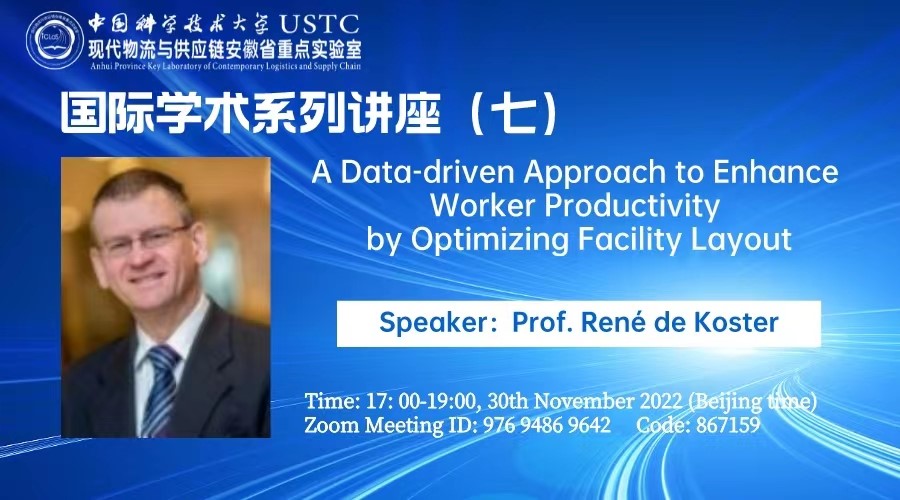11月30日下午17: 00-19: 00国际学术系列讲座(七)将于以下平台同步直播。
直播链接1(寇享学术):https://www.koushare.com/lives/room/473069
直播链接2(B站):https://live.bilibili.com/26422082
温馨提示:
因网速问题限制,可能会遇到画质、声音问题,感谢理解支持!
【会议议程】
会议时间:11月30日下午17: 00-19: 00(北京时间)
ZOOM meeting ID:976 9486 9642, 密码:867159
【专家简介】

René de Koster is a professor of logistics and operations management at the Department of Technology and Operations Management, Rotterdam School of Management, Erasmus University. He is the author and editor of eight books and over 230 papers published in books and journals such as OR, POM, JOM, TS, IISE T, EJOR, and Interfaces. He is the associate editor of OR and TS, in the editorial boards of eight academic journals, a fellow of two research schools, member of the European Logistics Association (ELA) R&D board, member of the BVL Scientific Advisory Board, chairman of two Dutch logistics awards, chairman of Stichting Logistica, and founder of the Material Handling Forum.
【报告摘要】
The facility layout problem (FLP) is the problem of determining non-overlapping positions of departments on the shop floor to minimize material handling costs. Traditional methods for solving FLPs consider pairwise (from-to) flows to optimize layouts. This paper shows that these traditional methods underestimate the total travel distance of a layout, when departments have more than a single input/output point and some flows consist of visits to more than two departments. To accurately calculate the traveled distances, the actual routes of the workers and transporters (so-called connected movements) in the system need to be determined. The connected movements of the workers in a facility can now be captured using the Internet of Things network and stored in the cloud server for analysis. We propose a mixed-integer non-linear programming model for the FLP that minimizes the total travel distance using these connected movements as the input data. Because of the complexity of the problem, a biased random key genetic algorithm is used to find the layout. To ensure the validity of the method, a case study is carried out at a fertilizer production company that implemented an Internet of Things network to capture worker movement data to minimize worker productivity loss via an improved layout. By using these connected movements, the best layout for the case company is found. The results of the proposed data-driven optimization method indicate that leveraging connected movements can reduce the total travel distance by 10.6% compared to the best possible layout generated by the traditional pairwise method in the case study.